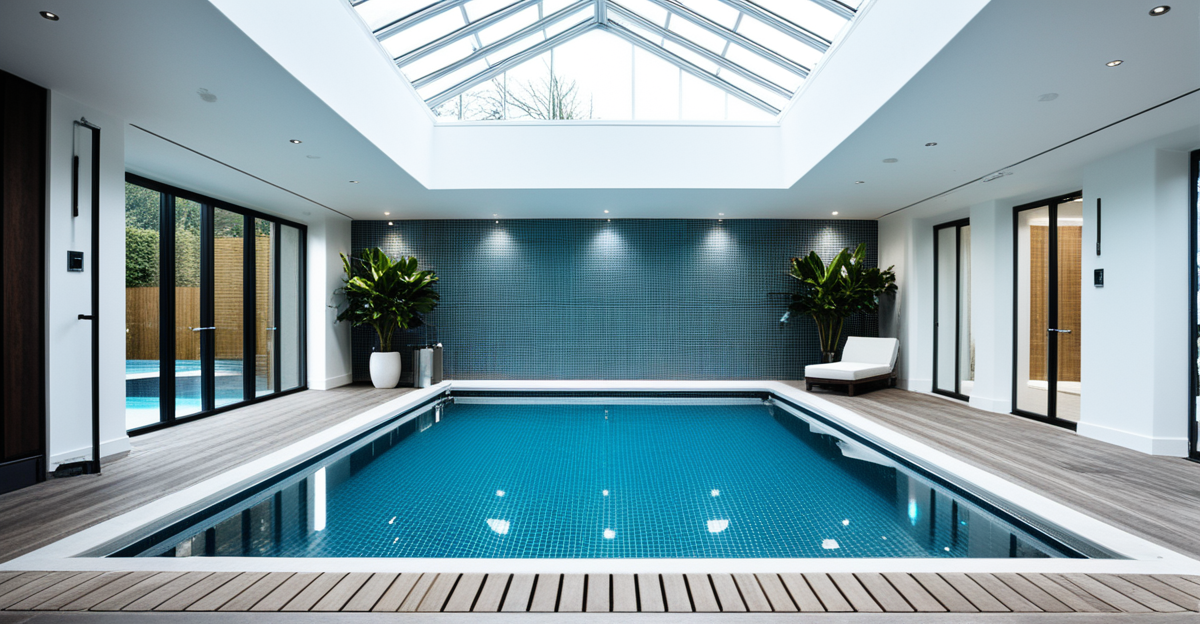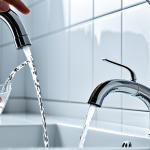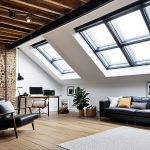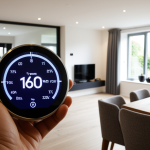Modern strategies for eliminating chlorine smells in indoor pools
Controlling the chlorine smell in indoor pools requires fresh, modern approaches beyond simply reducing chlorine levels. Across the UK, revamping indoor pools now often involves combining chlorine smell solutions with advanced air and water treatment technologies.
One prominent UK pool innovation involves integrating sophisticated chemical treatments with water balancing techniques that minimize chloramines—the compounds primarily responsible for the strong chlorine odour. New-generation chemicals offered by UK suppliers help keep pools disinfected while significantly cutting down offensive smells. These treatments must be carefully managed; improper balancing can lead to persistent odours and irritation.
Also read : Top techniques to curb algae and mold in damp uk climates
Additionally, many UK facilities adopt comprehensive maintenance strategies, including regular pool water testing and automated chemical dosing systems. These ensure consistent chlorine levels and reduce fluctuations that contribute to odour problems. Pool operators have found that combining these modern chemical approaches with improved air ventilation creates the most pleasant indoor pool experience.
In summary, UK pool innovations are shifting toward a holistic model—optimizing water chemistry, ventilation, and maintenance practices to mitigate chlorine smells effectively. This multi-faceted strategy proves more successful than relying solely on traditional chlorine use or ad-hoc measures.
Additional reading : Mastering water changes: the ideal schedule for small uk garden pools
Advanced ventilation and air management systems
Modern indoor pools in the UK increasingly rely on innovative UK pool ventilation strategies to tackle persistent chlorine odour problems. Effective chlorine odour control hinges on advanced HVAC systems that ensure continuous fresh air exchange, reducing the concentration of chloramines in the air.
UK specialists recommend installing high-performance air extraction units strategically positioned near swimmer areas, where chlorine smells tend to accumulate. These systems often incorporate humidity control, preventing moisture buildup that can worsen odours. Additionally, integrating air purification filters designed to capture chemical compounds further enhances air quality solutions in pool facilities.
To optimise results, pool operators should schedule regular maintenance checks and calibrate ventilation airflow according to pool size and usage intensity. Balancing air changes per hour avoids excessive energy costs while maintaining a fresh environment.
Examples from UK projects highlight that combining mechanical ventilation with natural airflow—such as opening windows or vents during milder weather—can drastically reduce chlorine smell levels. Such hybrid solutions are increasingly considered best practice within UK pool ventilation standards, delivering a healthier, more comfortable space for swimmers and staff alike.
Alternative disinfection technologies for UK pools
Exploring chlorine-free disinfection is gaining momentum in UK pool innovations. Two prominent alternatives are UV pool systems UK and ozone pool treatment. UV systems disinfect by exposing pool water to ultraviolet light, effectively neutralising harmful pathogens without adding chemicals. These systems are praised for significantly reducing chlorine smell while maintaining water hygiene. UK pool operators note that UV can be integrated alongside low levels of chlorine, optimising disinfection and odour control.
Ozone pool treatment uses ozone gas, a powerful oxidant, to destroy contaminants and chloramines—primary culprits behind chlorine smell. This approach often allows for lower chlorine concentrations or elimination entirely. However, ozone systems require careful installation and expert monitoring due to ozone’s reactive nature and regulatory requirements in the UK.
Many public UK pools opt for combined disinfection solutions: UV or ozone supplements reduce chlorine dependency, cutting odours and irritation. Private pools also benefit, particularly where sensitive users demand gentler environments.
UK pool specialists highlight that while initial setup costs for UV or ozone systems may be higher, operational savings and improved chlorine smell solutions justify investment. Selecting the right system depends on pool size, usage, and compliance with UK health regulations, ensuring both safety and comfort.
Modern strategies for eliminating chlorine smells in indoor pools
Revamping indoor pools in the UK increasingly embraces integrated chlorine smell solutions that address both water quality and ambient air. UK pool innovations no longer treat chlorine odours as isolated issues; instead, they implement coordinated approaches combining advanced water chemistry, ventilation, and disinfection technologies.
Key UK technology trends include:
- Use of chemical treatments tailored to neutralize chloramines effectively while avoiding over-chlorination.
- Sophisticated water balancing techniques that maintain optimal pH and sanitizer levels to prevent odour formation.
- Integration of hybrid systems combining low-level chlorine with novel disinfection such as UV or ozone.
- Enhanced pool ventilation and air management to capture and dissipate chlorine gases quickly.
- Continuous monitoring and automation to maintain consistent chemical dosing and airflow.
This multi-pronged approach reflects UK pool experts’ understanding that controlling chlorine smell requires more than simply reducing chlorine concentration. Instead, it demands precision in chemical management and state-of-the-art air quality solutions working in tandem. Operators investing in these innovations observe significant odour reduction, improved swimmer comfort, and regulatory compliance, highlighting the effectiveness of the latest chlorine smell solutions in modern UK indoor pools.
Modern strategies for eliminating chlorine smells in indoor pools
Revamping indoor pools across the UK increasingly centres on integrated chlorine smell solutions that go beyond simple chlorine reduction. UK pool innovations focus on tackling chloramine formation and odour at multiple points, ensuring a comprehensive approach to air and water quality.
Key trends include the use of advanced chemical agents designed to neutralise chloramines without excessive chlorine dosing. These chemicals help reduce the primary sources of indoor pool odours. Alongside these, precise water balancing techniques ensure optimal pH and sanitizer levels, crucial in preventing off-putting smells from developing.
UK operators combine low-level chlorine use with modern disinfection technologies such as UV and ozone systems, creating hybrid solutions that minimise reliance on chlorine alone. Enhanced pool ventilation systems complement water treatments, swiftly removing chloramine vapours and improving air quality.
Automation technologies play a pivotal role by continuously monitoring chemical concentrations and ventilation parameters, ensuring consistent odour control under varying pool usage conditions.
This multi-dimensional strategy reflects UK pool experts’ consensus: eliminating chlorine smell demands precision chemistry, effective ventilation, and smart technology working together. Pools adopting these innovations report marked reductions in unpleasant odours and improved user comfort, positioning them at the forefront of chlorine smell solutions in the UK market.
Modern strategies for eliminating chlorine smells in indoor pools
Revamping indoor pools across the UK increasingly embraces comprehensive chlorine smell solutions that integrate water treatment, ventilation, and technology. UK pool innovations focus on reducing chloramines—the key contributors to odours—through a combination of targeted chemical agents and precise water balancing techniques. These strategies ensure sanitiser levels remain effective without producing excessive chlorine vapours.
A major trend in revamping indoor pools involves adopting hybrid disinfection systems that blend low-level chlorine use with alternatives like UV or ozone, enhancing hygiene while minimising traditional chlorine smell. UK operators report that pairing these innovations with enhanced ventilation systems improves air quality dramatically.
Automated monitoring and dosing technologies are central to modern strategies, enabling real-time adjustment of chemical concentrations and airflow to match pool activity. This dynamic control prevents fluctuations that often cause odour spikes.
Overall, UK pool innovations offer a multi-dimensional approach to chlorine smell solutions—addressing cause and effect through chemistry, air management, and smart monitoring. This coordinated methodology is key for pool operators committed to creating fresh, comfortable indoor environments that meet health regulations and user expectations.







